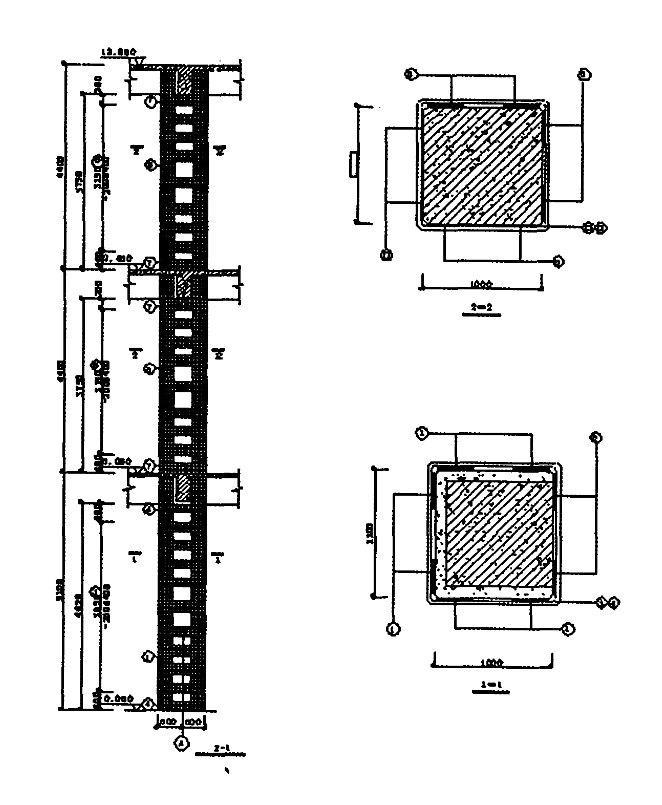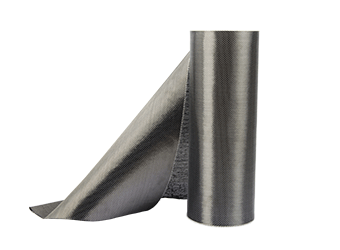Solutions
Horse Construction offers full range of structural strengthening materials with technical supports, documentation supports, products supports, project supports.
CFRP in frame column
1 Engineering Overview
The main body of a project is on the 18th floor, and the height of the main body of the house is 63.45m. The height of one layer is 5.1m, the second to fifth and tenth layers are 4.4m, and the other layers are 3.3m and 3.0m. The project adopts cast-in-situ reinforced concrete frame shear wall structure, and the size of the column net is 6.5×7.2m and 6.5×7.8m. The concrete strength grade is below C40, above C35. The seismic fortification intensity of the project is 8, the design seismic acceleration is 0.20g, the seismic fortification category is Category C, the earthquake is grouped into the second group, the seismic grade frame is second class, the shear wall is first class, and the class II site.
2 Questions raised
During the construction, a 2.5m cantilevered corridor was added, and the reinforcement of the adjacent four frame columns was not adjusted accordingly, which left a hidden danger to the quality and safety of the project. There are mainly the following problems:
2.1 After the reinforced concrete with 2 to 3 layers of columns is reinforced, the minimum longitudinal steel reinforcement ratio does not meet the requirement of 0.7, and further reinforcement treatment is required.
2.2 The seismic performance of the one-layer outer concrete reinforcement method is not good, mainly because one side is unreinforced, and the reinforcement stirrups are not closed and closed, and further reinforcement treatment is required.
3 Strengthening mechanism of CFRP reinforced frame columns
Since carbon fiber reinforcement is mostly used for bending member reinforcement, it is necessary to understand its reinforcement mechanism when it is used for the reinforcement of biased members.
The main function of CFRP is to restrain the internal concrete when the frame columns are wrapped and reinforced with carbon fiber. Because of the high tensile strength and elastic modulus of CFRP, this restriction effect is obvious. When the concrete is compressed to produce lateral deformation, CFRP can restrain the concrete deformation and increase the ultimate compressive strain of the concrete, thus delaying the crushing of the concrete in the compression area. Give full play to the plastic deformation properties of longitudinal bars, improve the ductility of reinforced concrete frame columns, thereby improving the bearing capacity and seismic performance of frame columns.
4 CFRP reinforced design
Under the premise of structural stress analysis and calculation, combined with the comparison and selection of frame column reinforcement schemes, it is more appropriate to select the CFRP reinforcement method. For the design of CFRP reinforcement, see Figure 1-CFRP Reinforcement Construction Drawing.

Summary
For frame columns with poor seismic performance and insufficient structural reinforcement, CFRP is used for reinforcement. The reinforcement mechanism is clear and the design is reasonable. It has been used for many years after reinforcement, and the working performance of the members has not been abnormal. This shows that the CFRP reinforced frame columns can not only improve the bearing capacity, but also effectively improve the seismic performance of the members, which is worthy of promotion.
You can find anything here you are in need of, have a trust trying on these products, you will find the big difference after that.

High strength, unidirectional carbon fiber wrap pre-saturated to form a carbon fiber reinforced polymer (CFRP) wrap used to strengthen structural concrete elements.

High strength, unidirectional carbon fiber fabric pre-saturated to form a carbon fiber reinforced polymer (CFRP) fabric used to strengthen structural concrete elements.

High strength, unidirectional carbon fiber sheet pre-saturated to form a carbon fiber reinforced polymer (CFRP) sheet used to strengthen structural concrete elements.